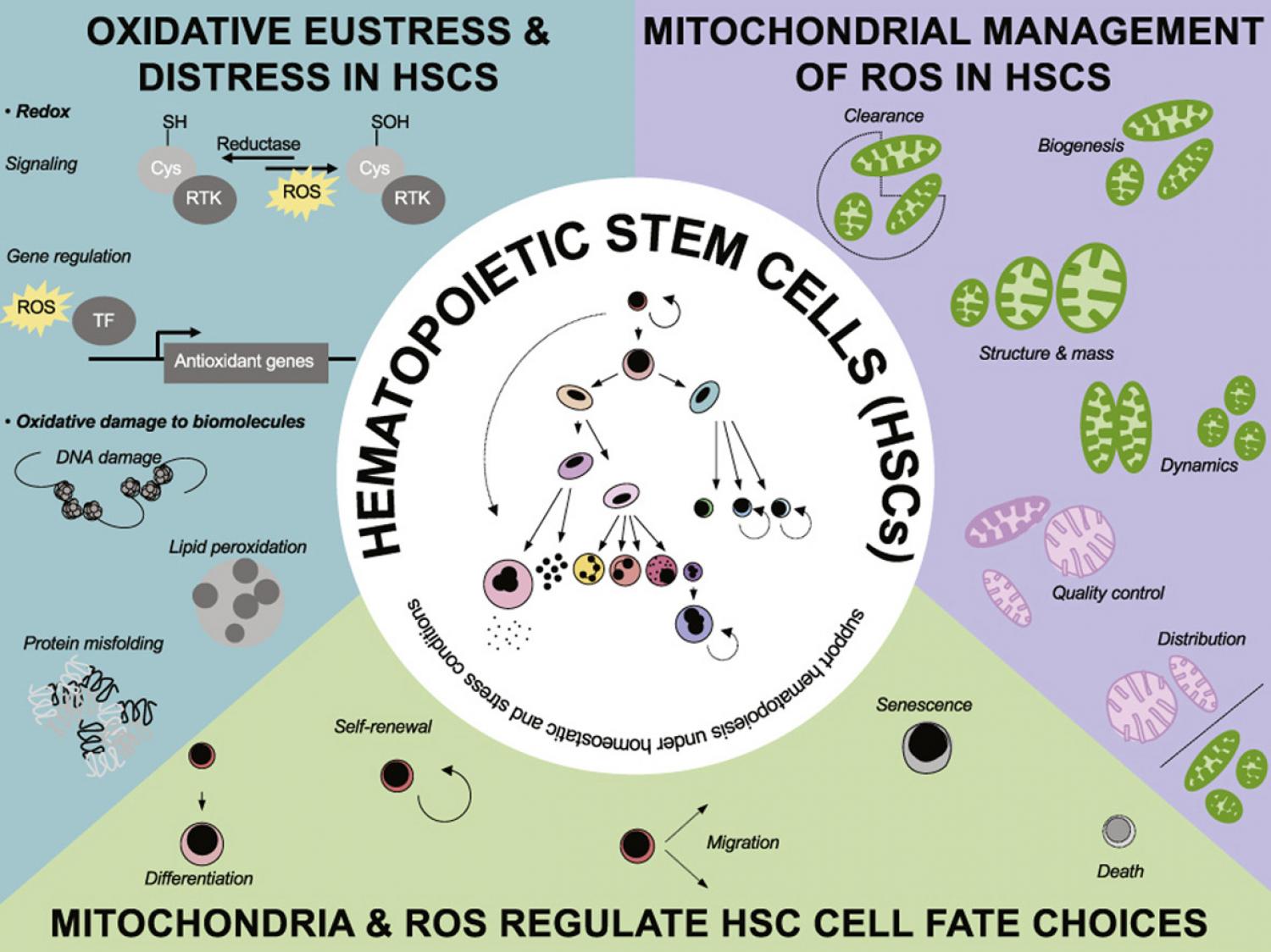
Hematopoietic stem cells (HSCs) are responsible for life-long production of blood and immune cells. HSC transplantation (HSCT) is the original cell therapy which can cure hematological disorders but also has the potential to treat other diseases if technical and safety barriers are overcome. To maintain homeostatic hematopoiesis or to restore hematopoiesis during transplantation HSCs must perform both self-renewal, replication of themselves, and differentiation, generation of mature blood and immune cells. These are just two of the cell fate choices HSCs have; the transitional phases where HSCs undergo these cell fate decisions are regulated by reduction-oxidation (redox) signaling, mitochondrial activity, and cellular metabolism. Recent studies revealed that mitochondria, a key source of redox signaling components, are central to HSC cell fate decisions. Here we highlight how mitochondria serve as hubs in HSCs to manage redox signaling and metabolism and thus guide HSC fate choices. We focus on how mitochondrial activity is modulated by their clearance, biogenesis, dynamics, distribution, and quality control in HSCs. We also note how modulating mitochondria in HSCs can help overcome technical barriers limiting further use of HSCT.
